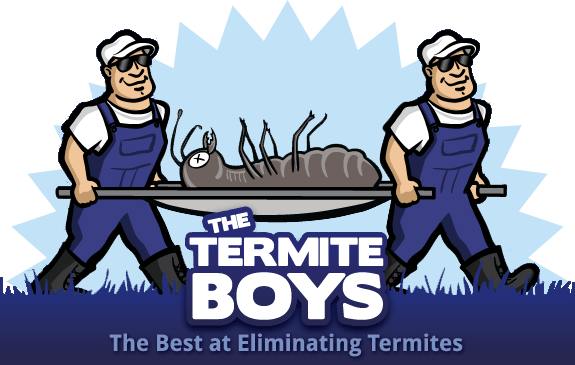When spring arrives in Massachusetts, it’s a time of blooming flowers, warming temperatures, and unfortunately, swarming termites. For homeowners, spring marks the beginning of termite season, when these destructive pests become most active. Without proactive measures, termites can silently wreak havoc on your home’s structure, leading to thousands of dollars in damage.
This blog will guide you through understanding the termite threat, identifying early signs of infestation, and implementing effective strategies to protect your home this spring.
Why Is Spring Prime Time for Termites in Massachusetts?
Springtime in Massachusetts creates the ideal environment for termites, especially subterranean termites, which are common throughout the region. The combination of warming weather and increased humidity serves as a wake-up call to termite colonies, triggering swarming behavior.
What Is a Termite Swarm?
Termite swarming is a natural process where reproductive termites leave their nests in search of a new home to establish a colony. Spotting a termite swarm around your property is a clear warning sign that termites may already be nearby or targeting your home next.
Several factors make Massachusetts particularly hospitable to termites during spring:
- Moist Soil: Melting snow and early spring rains create moist conditions, which termites need to thrive.
- Abundant Wood: Tree debris from winter storms and untreated wood structures in and around homes provide termites with a buffet of food.
- Older Homes: Massachusetts is known for its older architecture, but traditional wooden structures are highly vulnerable to termite infestation, especially if they are untreated.
The Cost of Ignoring Termites
Termites don’t just chew through wood; they devour the structural integrity of homes. According to a study from the National Pest Management Association (NPMA), termites cause over $5 billion in damage annually in the U.S., with individual homeowners spending an average of $3,000 to repair property damage. Here in Massachusetts, the humid climate increases the risk of severe infestations.
Signs of a Termite Infestation
Because termites work behind the scenes, damage often goes unnoticed until it becomes severe. Being able to recognize the signs early can save you from costly repairs.
Common Indicators of Termite Activity
- Mud Tubes: Subterranean termites use mud tubes as highways between their nest and a food source. These pencil-thin tubes often appear on foundation walls or crawl spaces.
- Swarmers: Winged termites, or “swarmers,” are a sign that a colony is nearby or seeking a new nesting site. Look for discarded wings near windowsills or light sources.
- Hollowed-Out Wood: If wooden structures sound hollow when tapped, termites may have eaten through them.
- Frass (Termite Droppings): Drywood termites leave behind tiny, wood-colored droppings near infested areas. While drywood termites are less common in Massachusetts, always be on the lookout.
If you spot any of these signs, contact a professional pest control service immediately to assess the situation and recommend treatment.
Springtime Termite Prevention Strategies
Protection starts with prevention, and there are several proactive steps you can take during spring to safeguard your home.
1. Address Moisture Issues
Subterranean termites thrive in moist conditions, so eliminating standing water and reducing humidity around your home is crucial.
- Fix leaky pipes, faucets, and gutters.
- Ensure proper drainage around your foundation.
- Use a dehumidifier in basements and crawl spaces.
2. Eliminate Wood-to-Ground Contact
Termites access wooden structures by traveling through soil. Creating a barrier between wood and the ground can help deter them.
- Use concrete or metal barriers for deck, fence, or patio posts.
- Store firewood and debris away from your home. Ideally, they should be kept at least 20 feet away.
3. Seal Entry Points
Termites can enter your home through cracks and gaps, even ones as small as 1/32 of an inch!
- Inspect and seal cracks in the foundation, walls, and roof.
- Repair damaged window and door screens.
- Install termite shields along your foundation.
4. Maintain Your Landscaping
Overgrown shrubs and debris can create a pathway for termites to enter your home.
- Keep shrubs, trees, and plants trimmed and away from your foundation.
- Avoid using wood mulch near your home’s foundation; consider alternatives like gravel or rubber mulch.
5. Schedule Professional Inspections
Even with DIY measures, the most effective way to prevent termites is through regular inspections by licensed pest control professionals. Most experts recommend annual inspections, especially if you live in termite-prone areas such as Massachusetts.
Treatment Options for Termite Infestations
If you suspect or confirm a termite problem, swift action is essential. Modern pest control offers a variety of effective treatment options.
Chemical Treatments
Liquid termiticides can be applied to the soil around your foundation to kill termites on contact and create a protective barrier. These treatments can last for several years when applied correctly.
Baiting Systems
Bait stations are strategically placed around your property and include wood or cellulose material treated with a slow-acting insecticide. Termites ingest the bait and share it with the colony, leading to widespread elimination.
Wood Treatments
Treating wood with borates deters termites from infesting structural timber. This method is often used for pre-construction purposes but can also be applied to vulnerable areas in existing structures.
Fumigation (For Severe Infestations)
If a termite infestation is widespread, fumigation may be necessary. This process involves sealing your home and releasing a fumigant that penetrates deep into the structure to eliminate termites.
Why You Should Act Now
Spring’s termite swarm season is a crucial time to be proactive. Termites are not a problem that will just “go away”; they will continue attacking until their colony is addressed.
By implementing preventive measures and scheduling regular inspections, you can save yourself from costly repairs and preserve the value of your home.
Protect Your Home from Termites Today
The destructive power of termites may be small individually, but their collective impact can be massive. Don’t wait until it’s too late to take action.
If you’re ready to stop termites in their tracks, contact licensed pest control professionals in your area for an inspection and customized prevention plan. Together, you can ensure your home remains termite-free, not just for spring, but year-round.

